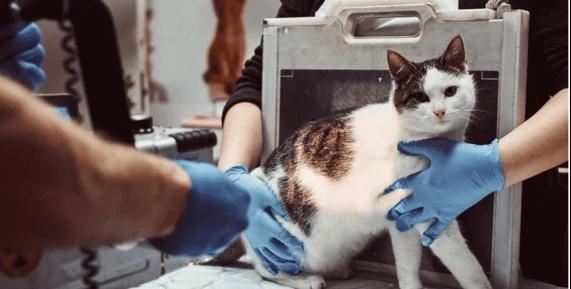Endoscopy has been widely accepted in veterinary medicine as a vital tool for less invasive examinations and operations in various body cavities. While veterinarians can substantially enhance their diagnostic and therapeutic capacities with sophisticated expertise, basic endoscopic procedures are still widely used. This POST examines a few cutting-edge methods that are expanding the field of veterinary endoscopy.
Retrograde Cholangiopancreatography (ERCP)The ERCP is a fluoroscopically guided procedure used to diagnose and treat conditions affecting the biliary tract and pancreas. A catheter must be inserted into the duodenum and cannulated at the papilla of Vater to inject contrast dye and view the pancreatic and biliary ductal systems. ERCP can diagnose and treat bile duct obstruction caused by stones, strictures, or tumors. It can remove stones, install stents, and obtain pancreatic juice or bile samples.
Interventional BronchoscopyBeyond just viewing the airways, interventional bronchoscopy enables minimally invasive respiratory system operations. Techniques for treating airway tumors include laser therapy, balloon dilation for tracheal strictures, foreign body extraction, and airway stenting. Proficient bronchoscopists can even take lung biopsies using the bronchoscope, eliminating the need for more intrusive surgical treatments.
Laparoscopic SurgeryDuring a laparoscopy, internal organs are seen and treated by making tiny incisions in the belly by inserting a laparoscope and other equipment. Laparoscopy is a frequent operation in veterinary medicine for spaying and neutering. Still, it can also be utilized for more sophisticated surgeries like gastropexy (stomach tacking) and liver biopsies, which are diagnostic procedures. Compared to open surgery, laparoscopy offers many benefits, such as reduced pain, quicker recovery, and better cosmetic results.
Endoscopic Ultrasound (EUS)By fusing endoscopy and ultrasound technology, EUS makes it possible to see organs and tissues in real time beyond the endoscope's reach. When assessing the liver, pancreas, bile ducts, and gastrointestinal tract, EUS is especially helpful. In addition to guiding fine-needle aspiration biopsies for a conclusive diagnosis, it can be utilized to diagnose tumors, abscesses, and inflammatory disorders.
Endoscopy in capsulesTo do a capsule endoscopy, a small capsule containing a camera is swallowed. The camera then transmits images of the gastrointestinal tract as it passes through the digestive system. This procedure works especially well for inspecting the small intestine, which is hard to see with conventional endoscopic techniques. Intestinal bleeding, polyps or tumors, and inflammatory bowel disease can all be diagnosed via capsule endoscopy.
Robotic-Assisted EndoscopyIn robotic-assisted endoscopy systems, robotic arms allow for greater precision and skill while manipulating endoscopic instruments than is possible with manual manipulation. A few advantages of this technology are improved veterinarian ergonomics, improved stability and control of the endoscope, and the ability to observe and access hard-to-reach areas.
Artificial Intelligence (AI) and EndoscopyArtificial intelligence is rapidly transforming the endoscopic field with its uses in image processing, procedure support, and even automated diagnosis. Artificial intelligence (AI)-)-powered tools can scan endoscopic images to find anomalies, polyps, or cancers more accurately than human vision alone. This device has the potential to improve the accuracy and efficiency of veterinary endoscopic diagnostics significantly.
Conclusion
It takes specialized training and experience to become proficient in these sophisticated procedures. Nonetheless, there are a lot of possible advantages for patient care. Veterinarians can provide minimally invasive diagnostic and therapeutic alternatives that enhance patient outcomes and shorten recovery times by expanding the frontiers of veterinary endoscopy.
To sum up, veterinary endoscopy has developed well beyond its initial uses. Innovative methods such as capsule endoscopy, robotic-assisted endoscopy, laparoscopy, EUS, ERCP, robotic bronchoscopy, and AI-powered image processing are creating new avenues for minimally invasive animal diagnosis and treatment. Veterinarians will be more and more prepared to give their patients the best treatment possible as these technologies advance and become more widely available.


